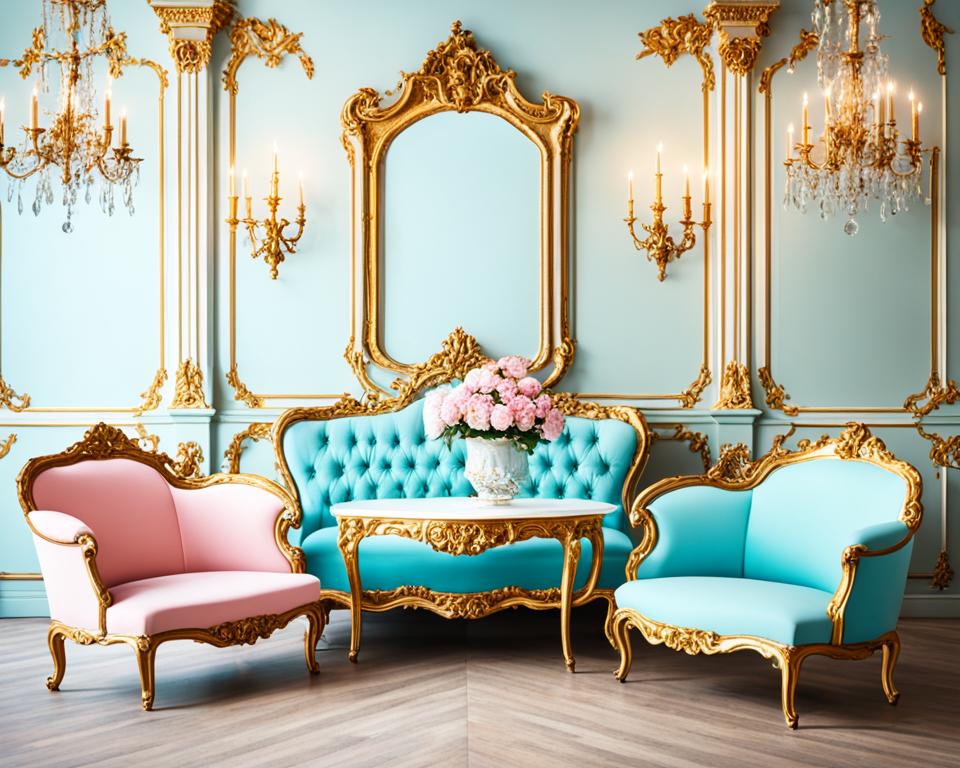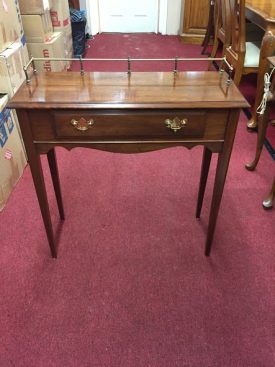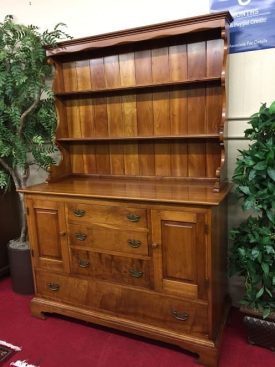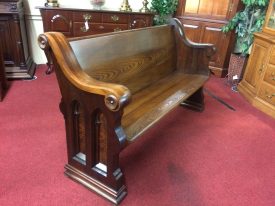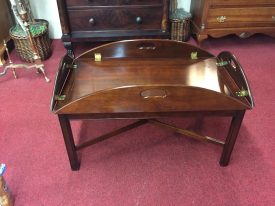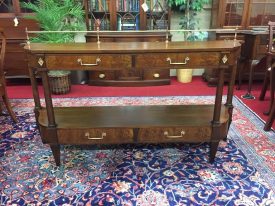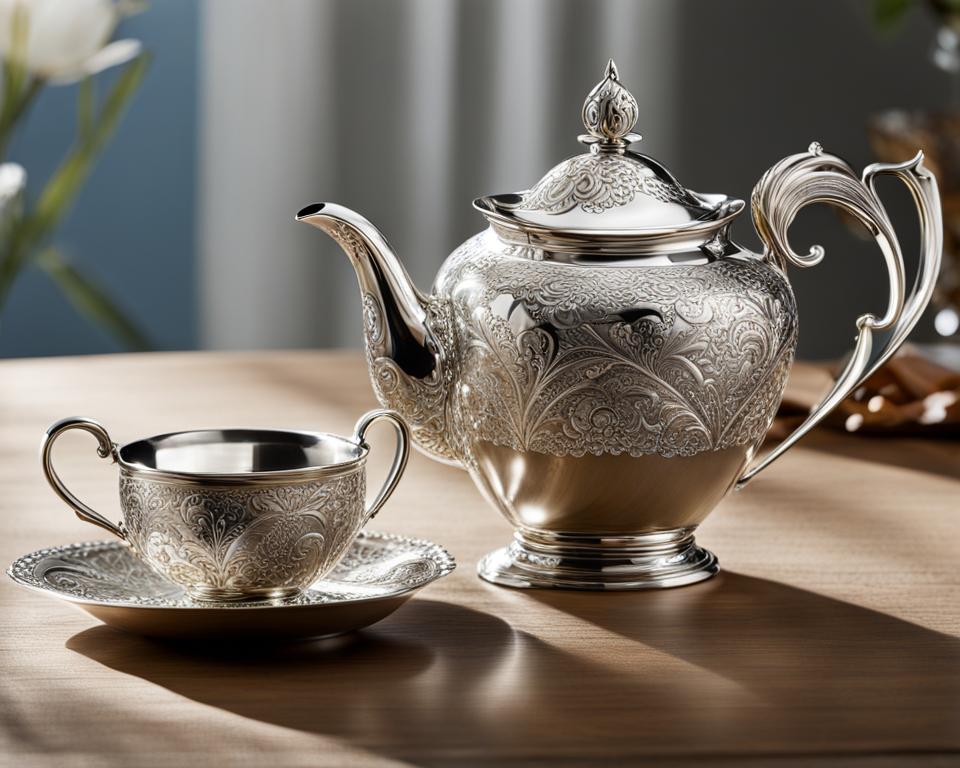Antique decor is a fascinating realm that encompasses various historical periods, each with its own unique style and characteristics. Whether you’re a decorator or a collector, understanding the key differences between these periods can help you create authentic and cohesive antique-inspired spaces that truly reflect the spirit of a bygone era.
Key Takeaways:
- Antique decor spans different historical periods, each with distinct design characteristics.
- Understanding the terminology and differences between vintage, antique, and retro styles is crucial.
- Vintage decor reflects the mid-20th century, while antique items are at least 100 years old.
- Retro decor imitates styles from the past, often the 1950s to 1970s.
- Antique styles include Baroque, Rococo, Neoclassical, Victorian, Art Nouveau, Art Deco, and Mid-Century Modern.
Vintage, Antique, and Retro: Understanding the Terminology
When it comes to decorating with a touch of history, the terms “vintage,” “antique,” and “retro” are often used interchangeably. However, each term has its own distinct meaning and refers to different styles and eras. Understanding the differences between these terms can help enthusiasts and collectors make informed choices when it comes to incorporating these timeless pieces into their spaces.
Vintage: A Sense of Nostalgia
Starting with vintage, this term refers to items that are typically between 20 to 99 years old. Vintage pieces evoke a sense of nostalgia and offer a glimpse into the aesthetics and design trends of the past. From mid-century modern chairs to vibrant pop art pieces, vintage decor can add a unique and authentic touch to any space.
Antique: Valued for Historical Significance
On the other hand, antique items are defined as those that are at least 100 years old. These pieces are highly valued for their historical significance, rarity, and craftsmanship. From Victorian-era loveseats to 18th-century French armoires, antique furniture and decor represent a bygone era and offer a glimpse into the rich heritage of the past.
Retro: Embracing the Past
Unlike vintage and antique, retro items are newly made but designed to imitate styles from the past. Retro decor pays homage to specific eras, often the 1950s, 1960s, and 1970s. It captures the essence of those times through bold colors, eclectic designs, and playful nods to the past. Retro pieces give a modern twist to vintage aesthetics, allowing individuals to create spaces that exude nostalgia and charm.
In summary, vintage, antique, and retro are distinct terms that refer to different styles and eras in decorating. Vintage items offer a sense of nostalgia, antique pieces hold historical value, and retro decor celebrates the past with a modern twist. By understanding the terminology, collectors and enthusiasts can curate their spaces with authenticity and style.
Vintage: Reflecting an Era
Vintage decor provides a fascinating glimpse into the design sensibilities of past eras. These pieces, typically from the mid-20th century, are cherished for their craftsmanship and attention to detail. From elegant furniture to vibrant artwork, vintage items bring a unique charm to any space.
Embodying the spirit of its time, vintage furniture showcases the design trends and influences of the era it represents. One iconic example of vintage furniture is the mid-century modern chair, which emerged during the 1950s and remains an enduring symbol of sleek simplicity and functionality.
Mid-century modern chairs from the 1950s are prized for their clean lines, organic forms, and innovative use of materials. These timeless pieces combine comfort and style, making them beloved additions to both contemporary and vintage-inspired interiors.
Vintage decor is not only about furniture; it encompasses a wide range of items that reflect the aesthetics and tastes of the era. For example, in the 1970s, vibrant pop art emerged, drawing inspiration from popular culture and consumerism. Pop art pieces, with their bold colors and playful imagery, became a defining characteristic of this vintage era.
By incorporating vintage furniture and decor into your home, you can create a space that pays homage to the design legacy of the past. Whether you choose to mix and match different vintage styles or focus on a specific era, vintage design allows you to infuse your space with character and historical significance.
Advantages of Vintage Decor
There are several advantages to incorporating vintage decor into your home:
- Unique Style: Vintage pieces add a distinctive and one-of-a-kind look to your space, setting it apart from mainstream trends.
- Sustainability: Choosing vintage items over new ones helps reduce waste and promotes a more environmentally friendly approach to decorating.
- Quality Craftsmanship: Vintage furniture often exhibits exceptional craftsmanship, built to last for generations.
- Budget-Friendly: Vintage pieces can be more affordable than their contemporary counterparts, allowing you to create a stylish home without breaking the bank.
With the multitude of vintage options available, you’re sure to find pieces that resonate with your personal style and add a touch of nostalgia to your home.
Antique: Timeless Treasures
Antique furniture and decor hold a distinct charm and timeless allure. These treasures, aged 100 years or more, transcend time and serve as a window into the past. Valued for their historical significance, rarity, and exquisite craftsmanship, antique items are highly sought after by collectors and decorators alike.
Antique design encompasses a wide array of styles from various cultures and periods. From elegant Victorian-era loveseats to ornate 18th-century French armoires, each antique piece tells a unique story and adds a touch of sophistication to any space.
The preservation of antique furniture and decor is essential to maintain their beauty and value. Proper care and conservation techniques ensure that these time-honored pieces continue to enchant future generations with their rich history and intricate details.
Creating an antique-inspired space involves careful curation and a deep appreciation for the past. Incorporating antique furniture, decor, and design elements adds a sense of authenticity and elegance to any interior. Whether it’s a charming antique sideboard or a vintage chandelier, antique pieces bring a touch of grandeur and sophistication to any room.
Explore the world of antique decor and uncover the treasures that whisper stories of the past. Embrace the beauty and craftsmanship captured in each antique piece, and let your space reflect the timeless allure of these treasures.
Retro: Nostalgic Charm
Retro decor evokes a sense of nostalgia by imitating trends and fashions from more recent eras, particularly the 1950s, 1960s, and 1970s. It celebrates the vibrant and playful designs of the past while adding a modern twist. Retro furniture, retro decor, and retro design have become popular choices for those seeking to infuse their spaces with a touch of vintage charm.
Inspired by the iconic styles of mid-century modernism, retro furniture embraces clean lines, bold colors, and unique shapes. It often features materials such as plastic, vinyl, and chrome, which were popular during the mid-20th century. From Eames lounge chairs to sputnik chandeliers, retro furniture brings a sense of whimsy and personality to any room.
When it comes to retro decor, eclecticism is key. Mixing and matching different patterns, textures, and colors is a hallmark of this design style. Retro decor embraces bold and vibrant hues, such as mustard yellow, avocado green, and burnt orange. Geometric patterns, abstract art, and funky wallpapers are also common elements. Retro design encourages self-expression, allowing individuals to create unique and personalized spaces.
“Retro decor is like a time machine that transports you back to the vibrant and playful styles of the mid-20th century. It’s a nod to the past with a modern twist.”
The Key Features of Retro Design:
- Bold colors and patterns
- Clean lines and unique shapes
- Mixing and matching different textures
- Eclectic and playful elements
- Embracing vintage-inspired accessories
| Retro Furniture | Retro Decor | Retro Design |
|---|---|---|
| Mid-century modern chairs | Abstract art | Bold and vibrant color schemes |
| Sputnik chandeliers | Funky wallpapers | Geometric patterns |
| Plastic, vinyl, and chrome materials | Embracing bold accessories | Mixing different textures and patterns |
Evolution of Antique Decor Styles
Antique decor is not stagnant, but rather an ever-evolving reflection of historical influences and societal changes. Over different eras, antique design has transformed, adapting to new artistic trends, cultural shifts, and changing tastes. Exploring the evolution of antique decor provides a fascinating glimpse into the rich tapestry of our past and offers valuable insights for those looking to infuse their spaces with a sense of history and character.
The Influence of Historical Eras on Antique Decor
Antique design draws inspiration from various historical periods, each leaving its indelible mark on the evolution of decor styles. From the grand opulence of the Baroque era to the delicate elegance of Rococo, every period has distinct characteristics that define its antique decor.
“The different historical eras have shaped antique decor in unique ways, reflecting the trends and preferences of the time. Studying these eras allows us to appreciate the beautiful craftsmanship and historical context behind each antique piece.” – Antique Design Expert
A Glimpse into the Past: Antique Design Characteristics
Antique decor is a testament to the artistic mastery and craftsmanship of its time. Each era brings forth a distinct set of design characteristics that exemplify its historical context.
- Baroque: Known for its ornate opulence, Baroque decor features elaborate ornamentation, curvilinear forms, and the use of luxurious materials like gold and marble.
- Rococo: In contrast to the Baroque style, Rococo decor exudes delicate elegance with its intricate details, pastel colors, and emphasis on asymmetry.
- Neoclassical: Inspired by ancient Greek and Roman art, Neoclassical decor embodies clean lines, symmetry, and restraint, harkening back to the classical ideals of balance and harmony.
- Victorian: Victorian decor is characterized by its romantic ornamentation, rich colors, and eclectic mix of influences from various historical periods.
- Art Nouveau: With its organic inspiration and flowing lines, Art Nouveau decor embraces nature, rejecting mass production and celebrating craftsmanship.
- Art Deco: Reflecting the glamour of the Jazz Age, Art Deco decor embraces sleek lines, geometric shapes, bold colors, and luxurious materials.
- Mid-Century Modern: Known for its clean simplicity, Mid-Century Modern decor features organic shapes, clean lines, and a focus on functionality and natural materials.
An Ever-Changing Landscape
The evolution of antique decor styles is a testament to the resilience and adaptability of design. From the influences of historical eras to the fusion of modern-day interpretations, antique decor continues to evolve, reflecting our changing tastes and societal aspirations.
The image above captures the evolution of antique decor styles, showcasing the distinct characteristics of different historical periods. It serves as a visual reminder of the diversity and richness of antique design eras.
Baroque: Ornate Opulence
The Baroque period, which thrived in the 17th and early 18th centuries, is renowned for its extravagant decor and opulent furnishings. Baroque decor is characterized by elaborate ornamentation, curvilinear forms, and the use of rich materials such as gilded wood, marble, and velvet.
This ornate antique style emerged as a reflection of the grandeur and excesses of European monarchies during this era. It was a time when art and design aimed to impress and awe, showcasing the power and wealth of the ruling elite.
Baroque furniture, with its intricate carvings, lavish detailing, and dramatic silhouettes, epitomizes the opulence of this period. Chairs, tables, and cabinets were adorned with elaborate motifs, including scrollwork, acanthus leaves, and cherubs.
This emphasis on lavishness extended to every aspect of baroque decor. Tapestries, chandeliers, mirrors, and other decorative items were embellished with exquisite craftsmanship and richly embellished materials, such as gold leaf and gemstones.
“The Baroque style is characterized by its sense of drama, with design elements that exude power, grandeur, and luxury.”
Key Features of Baroque Decor:
- Elaborate ornamentation and intricate detailing
- Curvilinear forms and dramatic silhouettes
- Rich materials like gilded wood, marble, and velvet
- Exquisite craftsmanship and attention to detail
- Opulent motifs such as scrollwork and cherubs
Baroque vs. Rococo
While Baroque and Rococo are both ornate styles, they have distinguishing features. Baroque tends to be more grandiose and formal, with heavy embellishments and bold designs, whereas Rococo is characterized by delicate elegance, asymmetry, and a lighter color palette. Baroque emerged first, setting the stage for the more whimsical and rococo style that followed.
Visualizing Baroque Decor:
To get a sense of the opulence and grandeur of baroque decor, take a look at this image showcasing a luxurious baroque-inspired living room:
Comparing Baroque and Rococo Styles
| Style | Characteristics |
|---|---|
| Baroque | Elaborate ornamentation, curvilinear forms, rich materials |
| Rococo | Delicate elegance, asymmetry, lighter color palette |
Rococo: Delicate Elegance
The Rococo style emerged in the mid-18th century as a reaction to the grandeur and heaviness of the Baroque period. It is characterized by a delicate and elegant aesthetic, featuring intricate ornamentation, pastel colors, and curvilinear forms. Rococo decor exudes a sense of grace and femininity, capturing the refined tastes of the French aristocracy during this time.
One of the notable features of rococo decor is the emphasis on asymmetry and movement. Unlike the symmetrical and structured designs of the previous Baroque era, rococo furniture and decorations embraced flowing lines and organic shapes, creating a sense of fluidity and dynamism.
Elaborate ornamentation is a hallmark of rococo style. The decorative elements often include motifs inspired by nature, such as acanthus leaves, shells, and floral designs. These intricate embellishments can be found in furniture pieces, wall panels, mirrors, and even ceiling decorations, creating a visually stunning and intricate environment.
The color palette of rococo decor is light and airy, featuring pastel shades of pink, blue, green, and cream. These soft colors contribute to the overall delicate and romantic ambiance of rococo interiors. Fabrics, such as silk and lace, were commonly used in furniture upholstery and draperies, further enhancing the luxurious and elegant feel.
The rococo style flourished in France during the reign of King Louis XV, with the Palace of Versailles serving as a prime example of rococo opulence. However, its influence extended beyond France, with notable examples of rococo-inspired decor found in other European countries, such as Germany and Austria.
“The rococo style reflects a departure from the heavy and formal aesthetic of the Baroque period. It embraces a lighter, more delicate approach to design, adding a sense of playfulness and charm to interiors.” – Interior Designer Sophie Delacroix
Rococo decor remains a popular choice for those who appreciate the intricate craftsmanship and the ethereal beauty of this antique style. Whether it’s a rococo-style console table, an ornate French chandelier, or a delicately carved settee, incorporating rococo elements into your interior can add a touch of timeless elegance and sophistication.
| Features of Rococo Decor | Examples |
|---|---|
| Intricate ornamentation | Elaborately carved furniture, intricate wall panels |
| Curvilinear forms | Curved armchairs, sinuous tables |
| Pastel color palette | Soft pink upholstery, light blue walls |
| Flowing lines and asymmetry | Wavy mirror frames, asymmetrical console tables |
| Nature-inspired motifs | Shell-shaped decorations, floral patterns |
Neoclassical: Reviving Ancient Greece and Rome
The Neoclassical period, which emerged in the late 18th century, draws inspiration from the art and architecture of ancient Greece and Rome. Neoclassical decor, with its clean lines, symmetry, and restraint, reflects a return to classical ideals. This style sought to distance itself from the excesses of the Rococo period and aimed to revive the harmonious aesthetics of the classical era.
Neoclassical furniture and decor pieces emulate the grandeur and elegance of ancient civilizations. With its emphasis on simplicity and balance, this classical antique style offers a timeless appeal that continues to captivate decorators and enthusiasts today.
“Neoclassical decor combines the beauty of antiquity with the refinement of the classical era, creating a sophisticated and harmonious ambiance in any space.”
Characterized by its emphasis on order and proportion, neoclassical decor features elements such as columns, friezes, and pediments that lend a sense of grandeur and architectural significance. Furniture in this style often incorporates marble, gilt accents, and rich upholstery, adding to the overall sense of opulence.
The neoclassical aesthetic extends beyond furniture and permeates various aspects of interior design, including wall treatments, lighting fixtures, and accessories. Decorative elements such as vases, urns, and statues evoke the spirit of ancient Greece and Rome, adding a touch of classical elegance to neoclassical interiors.
Neoclassical Design Tips:
- Focus on clean lines and symmetrical arrangements to create a sense of order and balance.
- Choose furniture with classic forms, such as Greek klismos chairs or Roman-inspired console tables.
- Opt for a color palette of muted tones, including whites, creams, and soft pastels, to enhance the sense of restraint.
- Incorporate architectural details like columns or pediments to bring a touch of grandeur to the space.
- Accessorize with classical motifs, such as Greek key patterns or laurel wreaths, to reinforce the neoclassical theme.
Neoclassical decor offers a timeless elegance that effortlessly combines the beauty of ancient civilizations with the sophistication of the classical era. By embracing the principles of order, proportion, and restraint, this classical antique style brings a sense of timeless refinement to any space.
Victorian: Romantic Ornamentation
The Victorian era, spanning from the mid-19th to early 20th century, was an influential period in the world of antique decor and design. Victorians were known for their love of ornamentation, creating interiors that were lavish, intricate, and romantic. Victorian decor is characterized by an abundance of details, rich colors, and a blend of influences from various historical periods.
Victorian furniture and decor featured ornate carvings, intricate patterns, and luxurious fabrics. The Victorian style drew inspiration from a diverse range of sources, including Gothic, Renaissance, and Rococo elements. This eclecticism resulted in interiors that were opulent and visually captivating.
The rise of mass production and a growing middle class during the Victorian era led to a wider range of home furnishings. As a result, Victorian decor became more accessible to a larger audience, not only the elite. This expansion in availability allowed for greater customization and personal expression in interior design.
Victorian decor often incorporated sentimental motifs, such as floral patterns, cherubs, and romantic scenes. These elements evoked a sense of nostalgia and sentimentality, creating a warm and inviting atmosphere. The use of rich, deep colors like burgundy, emerald green, and royal blue further enhanced the opulence and drama of the Victorian interior.
Key Features of Victorian Decor:
- Ornate carvings and intricate details
- Rich, deep colors
- Eclectic mix of historical influences
- Luxurious fabrics and materials
- Sentimental motifs and romantic themes
Victorian style continues to be cherished and embraced by antique enthusiasts and interior designers who seek to recreate the romantic and opulent ambiance of this era. Whether it’s a beautifully carved Victorian loveseat, an intricately patterned wallpaper, or a gilded mirror, Victorian decor adds a touch of elegance and grandeur to any space.
Art Nouveau: Organic Inspiration
Art Nouveau, popular in the late 19th and early 20th centuries, embraced natural forms and organic inspiration. This artistic movement, known for its innovative approach, sought to break away from the heavily ornamented Victorian style and the industrialization of the era.
Art Nouveau decor features flowing lines, intricate floral motifs, and a rejection of mass production. It celebrates the beauty of nature, incorporating elements such as flowers, leaves, and insects into its designs. This style exudes elegance and a sense of harmony with the natural world.
One notable characteristic of Art Nouveau furniture is its emphasis on comfort and functionality, with pieces designed to reflect the human form and provide ergonomic support. Chairs and sofas often feature curvilinear shapes, soft upholstery, and decorative carvings that mirror the organic patterns found in nature.
The artistry of Art Nouveau extends beyond furniture, encompassing various decorative arts such as stained glass, ceramics, and jewelry. Glassware with fluid lines and floral motifs, intricately crafted ceramics, and exquisite metalwork are also key components of Art Nouveau decor.
The Art Nouveau style emerged as a response to the rapid industrialization and mechanization of the Victorian era. It represented a desire to reconnect with the natural world and celebrate the beauty of organic forms. Today, Art Nouveau decor continues to captivate with its unique blend of artistic expression, organic inspiration, and timeless elegance.
Art Deco: Modern Glamour
The Art Deco movement, prominent in the 1920s and 1930s, brought a sense of modernity and glamour to the world of design. This influential style emerged during the Jazz Age, reflecting the optimism, luxury, and extravagance of the time.
Art Deco decor is characterized by its sleek lines, geometric shapes, and use of luxurious materials. This style embraced innovation and technology, incorporating elements from various artistic disciplines such as architecture, fashion, and visual arts. Bold colors, bold patterns, and a streamlined aesthetic are hallmarks of Art Deco.
Art Deco furniture combines functionality with artistic expression. It often features elegant, clean lines and geometric motifs. Materials such as chrome, glass, lacquer, and exotic woods are prevalent in Art Deco furniture design. The glamour of Art Deco can be seen in the sleek curves, geometric patterns, and intricate detailing.
Characteristics of Art Deco:
- Geometric shapes and patterns
- Sleek lines and streamlined forms
- Luxurious materials such as chrome, glass, and lacquer
- Bold colors and contrast
- Intricate detailing and craftsmanship
“Art Deco is a style that epitomizes the elegance and glamour of the roaring twenties. Its bold aesthetic and luxurious materials continue to captivate and inspire designers today.” – Renowned interior designer, Emma Pearson
The Art Deco style was widely embraced in both architecture and interior design, gracing iconic buildings such as the Chrysler Building in New York City and the Palais de Tokyo in Paris. This visually stunning style continues to influence contemporary design, offering a timeless appeal that seamlessly blends modernity and glamour.
Mid-Century Modern: Clean Simplicity
The Mid-Century Modern movement emerged in the mid-20th century as a response to the ornate and intricate styles of the past. It embraced clean lines, functionality, and a connection to nature. Mid-Century Modern decor and furniture were characterized by their minimalist approach and organic shapes.
Mid-Century Modern design celebrated the beauty of simplicity and emphasized functionality. It sought to eliminate unnecessary embellishments and create spaces that were both visually appealing and practical. The use of natural materials, such as wood and leather, added warmth and depth to the overall aesthetic.
This minimalist antique style left behind the heavy ornamentation of previous eras and focused on creating an open and light-filled environment. It incorporated large windows to bring in natural light and blur the boundaries between indoor and outdoor spaces. This seamless integration with nature was a defining characteristic of Mid-Century Modern design.
“Simplicity is the ultimate sophistication.” – Leonardo da Vinci
Mid-Century Modern design not only influenced the world of interior decor but also had a significant impact on architecture and everyday objects. Architects like Frank Lloyd Wright and Eero Saarinen embraced the principles of this movement and designed iconic buildings that embodied the clean lines and functional aesthetics of Mid-Century Modernism.
The Key Features of Mid-Century Modern Decor and Furniture:
- Clean lines and minimal ornamentation
- Organic and geometric shapes
- Use of natural materials like wood, leather, and metal
- Integration of indoor and outdoor spaces
- Emphasis on functionality and practicality
- Bold colors and graphic patterns
In summary, Mid-Century Modern decor and furniture embody the spirit of clean simplicity and functionality. Its timeless design principles continue to inspire modern interiors and are celebrated for their minimalist aesthetic and connection to nature.
Famous Mid-Century Modern Designers:
| Designer | Iconic Work |
|---|---|
| Eames | Eames Lounge Chair |
| Mies van der Rohe | Barcelona chair |
| Hans Wegner | Wishbone Chair |
These designers and their iconic creations have become synonymous with the Mid-Century Modern style and continue to inspire designers and homeowners alike.
Contemporary: Eclectic Fusion
Contemporary antique decor is a captivating style that effortlessly blends elements from different historical periods and design styles. It embraces eclecticism, allowing individuals to express their unique taste and create spaces full of character. With this style, you have the freedom to mix vintage, antique, and retro pieces to curate a one-of-a-kind ambiance in your home.
Creating contemporary antique decor involves using a curated selection of furniture and accessories from various eras to create a harmonious fusion. You can incorporate vintage pieces with their nostalgic charm, antique items that exude timeless elegance, and retro accents that add a playful retro vibe to your space. By carefully combining these different influences, you can elevate your interior design to new levels of sophistication and style.
One of the key advantages of contemporary antique decor is its versatility. Whether you prefer the ornate opulence of the Baroque period, the delicate elegance of Rococo, or the clean simplicity of Mid-Century Modern, this eclectic style can accommodate a wide range of preferences. It allows you to mix and match elements according to your personal taste, creating a space that reflects your individuality and tells a unique story.
Contemporary antique decor is an invitation to explore the past and create a distinctive atmosphere in your home. With its blend of diverse influences, this style celebrates the rich history of design while allowing you to express your own creative spirit. So go ahead, embrace the beauty of eclectic antique style, and let your imagination roam free.
FAQ
What are the key differences between different historical periods of antique decor?
The key differences between different historical periods of antique decor lie in their distinctive styles, design characteristics, and cultural influences. Each period, such as Baroque, Rococo, Neoclassical, Victorian, Art Nouveau, Art Deco, Mid-Century Modern, and Contemporary Antique, reflects the trends and preferences of its time, resulting in unique aesthetics, materials, and forms.
What is the difference between vintage, antique, and retro in terms of decor?
While vintage, antique, and retro are often used interchangeably, they refer to distinct styles and eras. Vintage items are typically 20 to 99 years old and evoke a sense of nostalgia. Antique items, on the other hand, are at least 100 years old and valued for their historical significance. Retro items are newly made but designed to imitate styles from the past, often from the 1950s, 1960s, and 1970s.
How does vintage decor reflect a specific era?
Vintage decor offers a glimpse into the design sensibilities of past eras, particularly the mid-20th century. These pieces showcase craftsmanship, attention to detail, and the design trends of their time. Examples of vintage items include mid-century modern chairs from the 1950s and vibrant pop art pieces from the 1970s.
What makes antique decor timeless and valuable?
Antique decor, aged 100 years or more, holds historical significance and is cherished for its rarity, craftsmanship, and connection to the past. Antique pieces can be from various cultures and require preservation to ensure their longevity. Examples of antique items include Victorian-era loveseats and 18th-century French armoires.
How does retro decor capture nostalgic charm?
Retro decor imitates trends and fashions from past eras, particularly the 1950s, 1960s, and 1970s. While retro items may be newly made, they are designed to replicate the style of a specific period, evoking a nostalgic charm. Retro decor is known for its bold colors, eclecticism, and playful nod to the past.
How has antique decor evolved over time?
Antique decor has evolved over time through the influence of cultural, artistic, and societal shifts. Each historical period showcases distinct design characteristics that reflect the trends and preferences of its time. Studying the evolution of antique decor provides insights into the broader historical and cultural context.
What are the defining characteristics of Baroque decor?
Baroque decor, which flourished in the 17th and early 18th centuries, is characterized by elaborate ornamentation, curvilinear forms, and rich materials. This style reflects the grandeur and excesses of European monarchies during that period.
What sets Rococo decor apart?
Rococo decor emerged as a reaction to the grandeur of the Baroque period, emphasizing lightness, grace, and asymmetry. Rococo decor is known for its elaborate ornamentation, pastel colors, and curvilinear forms. It prevailed in the mid-18th century, particularly in France.
How does Neoclassical decor draw inspiration from ancient Greece and Rome?
Neoclassical decor drew inspiration from ancient Greek and Roman art and architecture. It features clean lines, symmetry, and restraint. This style emerged in the late 18th century as a response to the excesses of Rococo and reflects a return to classical ideals.
What defines Victorian decor?
Victorian decor, spanning from the mid-19th to early 20th century, is characterized by ornate details, rich colors, and a mix of influences from different historical periods. The Victorian era saw the rise of mass production and a growing middle class, leading to a wider range of home furnishings.
What are the characteristics of Art Nouveau decor?
Art Nouveau, popular in the late 19th and early 20th centuries, embraced natural forms and organic inspiration. Art Nouveau decor features flowing lines, floral motifs, and a rejection of industrial mass production. This style emerged as a reaction to the industrialization and mechanization of the Victorian era.
What defines the Art Deco style in decor?
Art Deco, prominent in the 1920s and 1930s, emphasizes sleek lines, geometric shapes, and luxurious materials. Art Deco decor is known for its bold colors, streamlined designs, and glamorous aesthetic. This style reflects the optimism and extravagance of the Jazz Age.
What characterizes Mid-Century Modern decor?
Mid-Century Modern decor emerged in the mid-20th century and celebrated simplicity, functionality, and a connection to nature. It features clean lines, organic shapes, and a focus on natural materials. This style influenced the design of furniture, architecture, and everyday objects.
What is contemporary antique decor?
Contemporary antique decor blends elements from various historical periods and design styles. It embraces eclecticism, allowing for personal expression and the mixing of different influences. Contemporary antique decor reflects the individual’s unique taste and can incorporate vintage, antique, and retro pieces.

